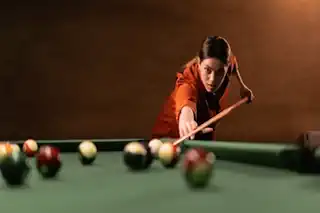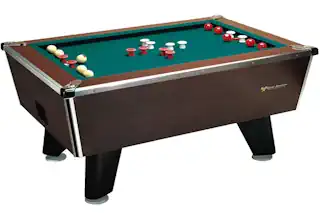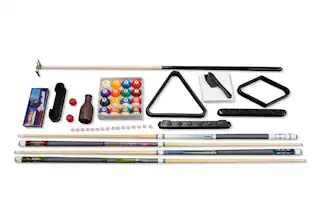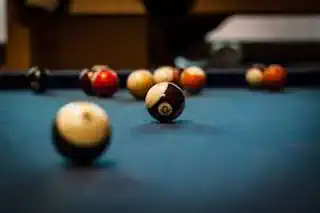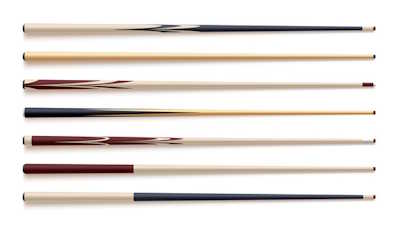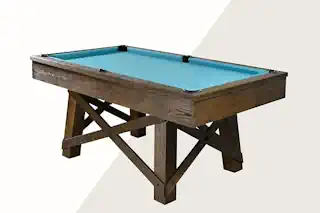How to Play 8 Ball: A Comprehensive Guide for Beginners

Are you ready to rack ’em up and break the silence with a satisfying clack? Billiards, the game of strategy and precision, draws in players from all walks of life. And perhaps among the most popular variants of this beloved game is 8 Ball Pool; simple to understand yet nuanced enough to keep you coming back for more. For those just getting their feet wet, the multi-faceted gameplay and subtle intricacies of 8 Ball Pool can seem daunting. Fear not, for this is your starter’s guide—a compass through the complex currents of the green felt ocean, if you will.
Whether you’re a casual gamer setting foot in a billiard hall for the first time or a competitive player with an unquenchable thirst for victory, this in-depth tutorial is your ticket to mastering the game of 8 Ball.
8 Ball’s Popularity Explained
Before we plunge into the game proper, it’s important to understand just why 8 Ball Pool has ensnared the hearts of so many cue-wielders. The game’s appeal lies in its accessibility. Unlike other billiard games, 8 Ball is a universal favorite, recognized by the World Pool-Billiard Association and played in virtually every cue sport venue worth its chalk.
It caters to a wide audience due to its blend of social interaction and skill. The rules are straightforward enough to entice newcomers but layered in tactics that can challenge even the most experienced players. This intersection of simplicity and complexity, social play, and strategic depth is what makes 8 Ball a perennial hit in the billiards world.
Getting to Know the Basics
The Objective of 8 Ball
The aim of 8 Ball is to pocket all of your assigned balls—either the stripes or solids—before your opponent, and then legally pocket the 8 ball to secure victory. A simple enough premise that belies the strategic depth required to execute it.
Each striped ball or solid ball does not have to be sunk in order but all of them must be sunk before shooting the eight ball. To win the game you must successfully shoot all of the balls you select after the racked balls have been broken. Just be sure the last ball you sink is the 8 ball.
The Setup and Equipment
To set up a game, you’ll need a standard billiards table, a full set of 15 object balls (including the 8 Ball), and a cue ball. Six pockets are spread across the table—four corners and two middle-side pockets. Place the 8 Ball in the center of the third row of the rack, and fill the other spots, alternating stripes and solids.
Rules and Etiquette

When stepping into the world of 8 Ball, it’s not just about the shots you take, but how you play the game. Here are some key rules and pieces of etiquette to keep you in good standing with your fellow players:
The Break: The game kicks off with a break shot. Make sure at least four balls hit the cushions, and if you pocket a ball, you get another shot. If you sink the cue ball, however, that’s a foul, and your turn ends.
Taking Turns: Players alternate turns. If you legally pocket one of your balls, you get another shot. Miss, and it’s your opponent’s turn. Fair play and patience are virtues in the green-felt arena.
Calling Your Shots: In more casual play, you might not need to, but in competitive games, always call your shot—the ball and the pocket. It’s all about transparency and respect for your opponent.
Handling Fouls: If you foul, your opponent gets ball-in-hand, meaning they can place the cue ball anywhere on the table for their next shot. Don’t be disheartened; fouls are learning opportunities.
Pocketing the 8 Ball: You must call the pocket for the 8 ball. Pocketing it before clearing your group of balls or sinking it into an uncalled pocket results in a loss. It’s the climax of the game, so aim with your heart as well as your cue.
Respect Your Opponent: Win or lose, shake hands. Acknowledge good shots and learn from those moments where the game didn’t go your way. Billiards is as much about camaraderie as competition.
Mind the Equipment: Treat cues, balls, and the table itself with care. These are the tools of the trade and respecting them shows your respect for the game, as well.
By abiding by these rules and maintaining a sense of etiquette, you’re not just playing a game—you’re enriching the tradition of billiards, keeping the spirit of fair play alive, and, most importantly, ensuring that everyone has a good time.
Delving into Gameplay Strategies
Reading Ball Patterns
One of the first advanced skills you’ll develop is the ability to “read the table,” which involves noting where each type of ball is positioned and planning your shots accordingly. A common early strategy is to clear a path for the 8 ball while pocketing low-risk shots.
Offensive and Defensive Plays
Knowing when to be aggressive and when to play it safe is key. Offensive plays involve pocketing your balls, while a defensive strategy contains an element of containment, often utilizing safeties or making strategic plays to block your opponent’s shots.
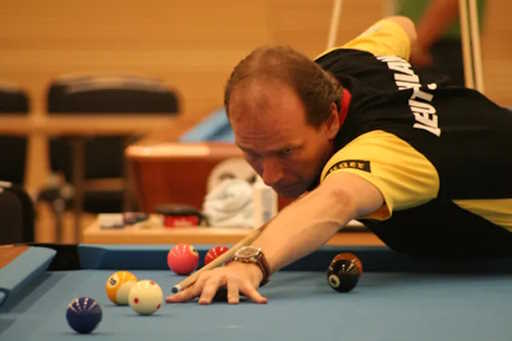
Using the Opponent’s Balls
An opponent’s balls may be shot to continue shooting but you must first hit your assigned ball before the opponent’s ball is sunk. Hitting and sinking the opponent’s ball first results in a foul and gives your opponent ball in hand. They can then place the white cue ball anywhere on the table for their next shot.
Improving Shot Accuracy
It’s not just about strength or instinct. Developing a consistent stance, grip, and bridge is critical for shot accuracy. Practicing straight and level strokes will help ensure your shot goes where you intend.
The Spectrum of Mistakes
Scratching on the 8 Ball
This is the bane of many players’ existence. Avoid sinking the 8 Ball before all your assigned balls are pocketed, which is an immediate loss in most cases.
Object Balls: Failing to Plan Ahead
The numbered ball or object ball must be sunk before the 8 ball. Short-sighted shots can leave you with a table that’s tough to clear. Think at least one step ahead to ensure you always have a shot—or a plan B if things don’t go as expected.
Ignoring Safety Shots
Playing it too aggressive can come back to haunt you. Always have an escape plan in case things don’t set up well.
Graduating to Advanced Techniques
Banking and Kicking Shots
These “trickier” shots can seem daunting but provide invaluable arsenal. A good banker can turn the tide of a game, and kicking shots (using the rails to make a shot) can often be the only way to reach a favorable angle.
Positional Play
Setting up for your next shot can be just as important as making your current one. Position the cue ball carefully after each shot to give yourself the best chance of success on the following plays. Play position is a challenge when there are problem balls on an open table. Before each shot the whole table should be consider before taking what appears to be an easy shot.
Cue Ball Control
Mastering the movement of the cue ball can win games. A well-placed cue ball can make your shots easier and your opponents’ shots more difficult. Sinking the white cue ball in a corner pocket or a side pocket is when a foul occurs. This is often referred to as when a player scratches.
Practicing for Success
The key to 8 Ball mastery is practice. Play often, focus on improving specific skills, and don’t be afraid to review and refine your strategy. Play with a variety of opponents to experience different tactics and styles, and remember that every game, win or lose, is a learning opportunity.
Conclusion: The Joy of the Game
Despite the guide’s strategic focus, it’s crucial not to forget the joy that 8 Ball—and billiards in general—can bring. The game is not only about victory or skill but also the camaraderie built over a table and the challenge that each game holds.
For the beginners setting their cue on the green for the very first time, remember to have fun and revel in the process of improvement. Learn to love the quiet dance of the balls across the table and the satisfaction of a well-placed shot as you progress in skill and understanding.
And for the seasoned players, guide your enthusiasm to help and encourage those new to the game. Share your tips, relish the competition, and above all, embody the respect and sportsmanship that the game so often inspires.
Welcome to the fascinating world of 8 Ball—may your games be filled with purposeful play, improving skill, and most importantly, enjoyment.
Frequently Asked Questions (FAQ)
Can you use any ball to break?
Yes, any ball can be used to break, but most players prefer the solid white cue ball because it’s designed for the impact and provides the best control for the break shot.
What happens if I pocket the 8 ball on the break?
Pocketing the 8 ball on the break does not result in an immediate win or loss. Instead, the player can choose to re-spot the 8 ball and continue playing or re-rack and break again.
Is it necessary to call every shot in 8 Ball?
In casual play, it’s common not to call each shot, especially straightforward ones. However, in more competitive or formal games, calling your shot, including the ball and the pocket, is a standard rule.
How can you tell if a shot is offensive or defensive?
An offensive shot is aimed at pocketing your balls and progressing the game towards winning. A defensive shot or playing safe, might not directly pocket a ball but is played to improve your position or make it harder for your opponent. Leaving the white cue ball behind other balls makes game play challenging for the opposing player.
How do I improve my cue ball control?
Improving cue ball control involves practicing shots of varying distances and angles, focusing on the spin and speed applied. Observing the effects of different strikes and consistently practicing will enhance your control over time.
What is the best way to handle a loss?
It’s natural to feel disappointed after a player loses, but it’s important to view each game as a learning opportunity. Congratulate your opponent, reflect on what you could do differently, and use the experience to improve your game.
Remember, the essence of 8 Ball lies not only in the competition but in the joy of playing, improving, and connecting with fellow enthusiasts. Each match offers a chance to learn something new, so stay curious and keep playing with passion.
